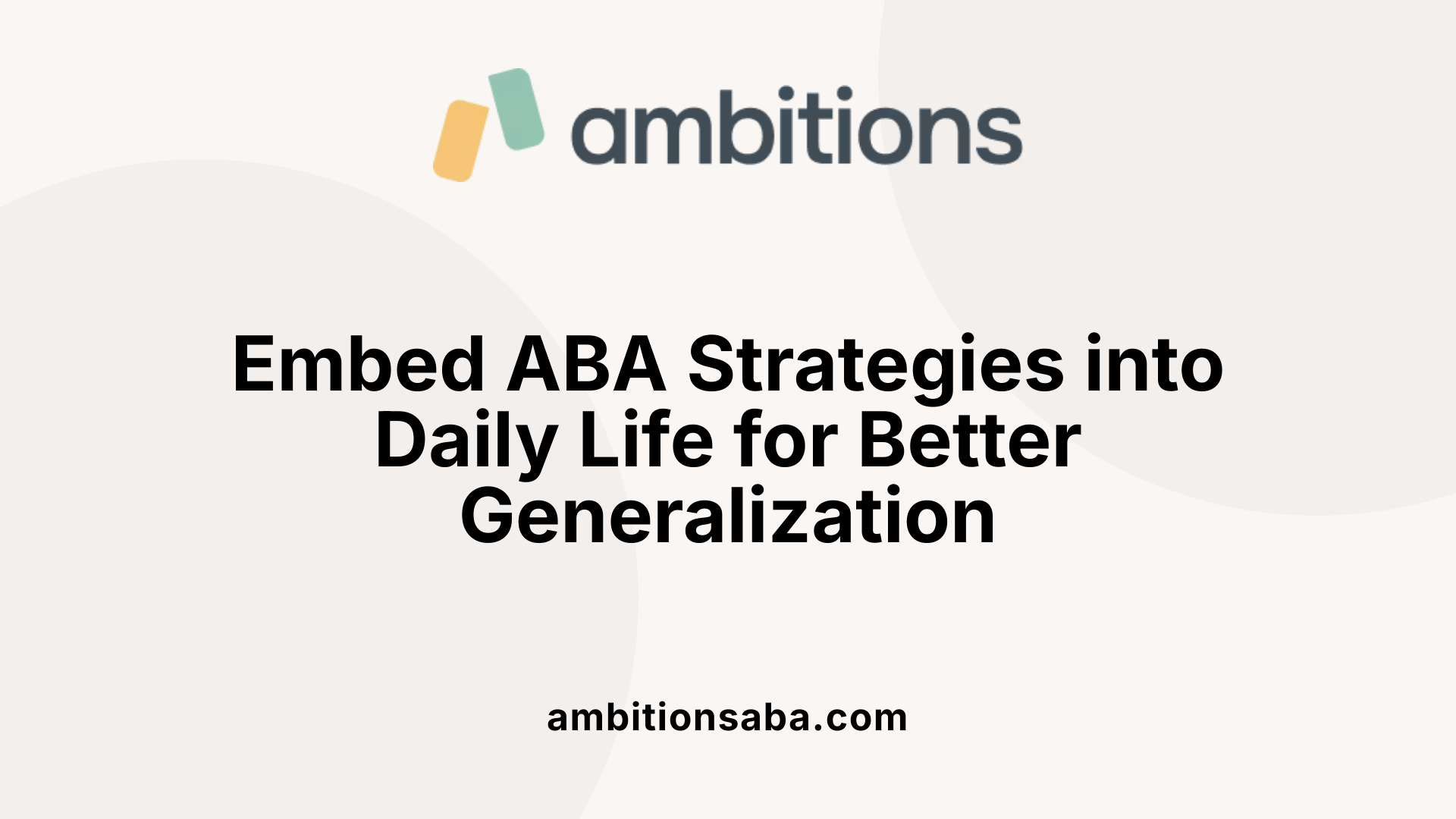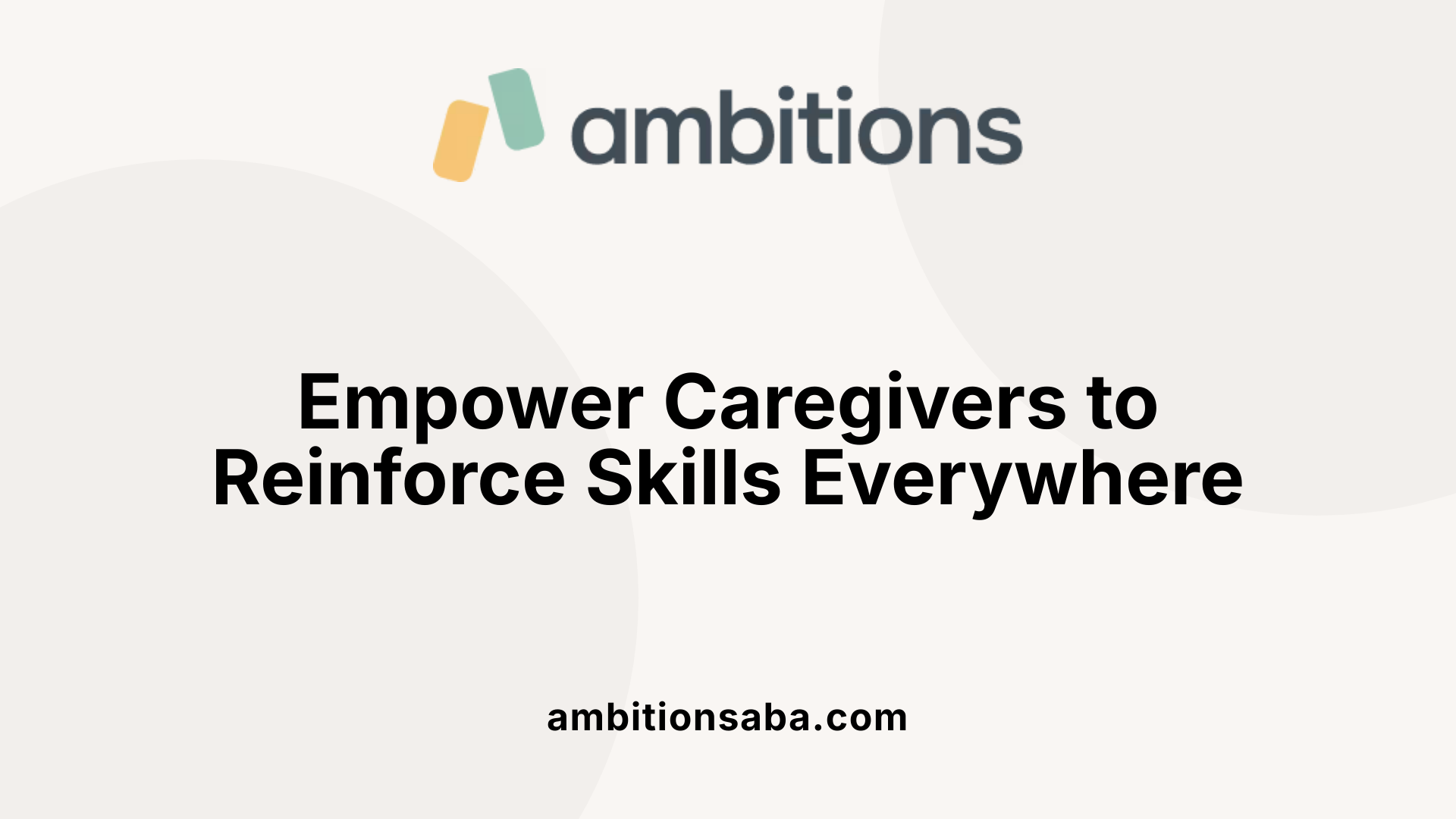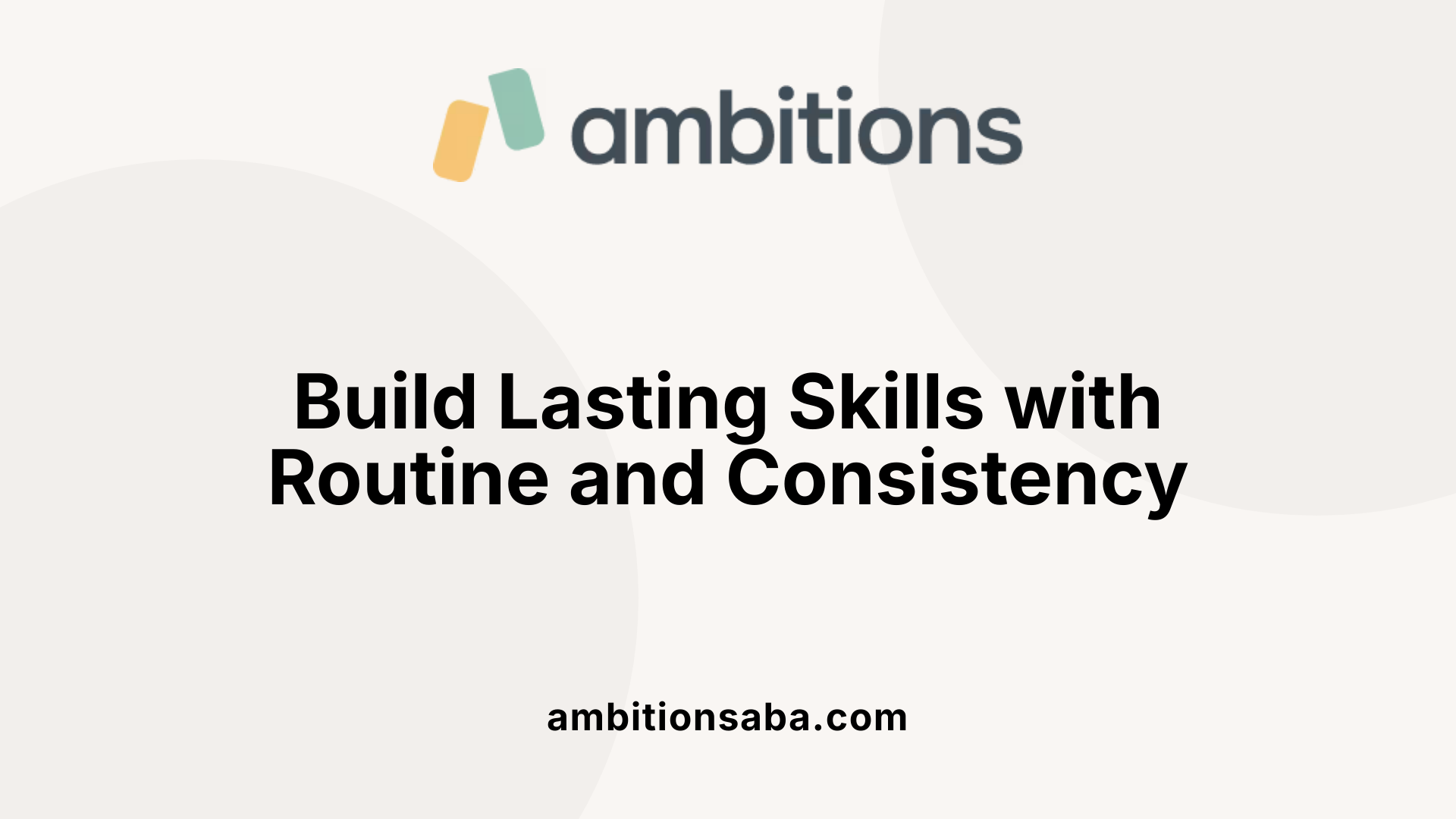Harnessing Behavior Analysis to Foster Balanced Screen Time in Neurodiverse Children
Understanding the Importance of Skill Generalization in ABA
Skill generalization is at the core of effective ABA therapy, ensuring that children apply learned behaviors across various environments such as home, school, and community. This ability not only promotes independence but also supports long-term success in everyday life. Given the importance of this process, caregivers play a vital role in reinforcing and extending skills beyond therapy sessions. This article explores practical strategies, evidence-based methods, and resources to help families support the generalization of ABA skills within a home setting.
Integrating ABA Techniques into Daily Routines for Better Generalization

What are some practical tips for implementing ABA strategies at home to promote skill generalization?
Implementing ABA strategies at home requires making learning a natural part of everyday life. One effective approach is embedding instruction within daily routines such as mealtime, bath time, or getting dressed. For example, teaching a child to request help during chores or play enhances the chance of applying these skills in different settings.
Using visual supports such as schedules, checklists, and picture cues helps children understand what to expect and promotes independence. Visual schedules displaying daily activities can guide children through routines, reducing anxiety and encouraging skill performance.
Consistency among all caregivers—parents, siblings, teachers—is crucial. Uniform reinforcement and prompting strategies prevent confusion and support steady progress. Training caregivers in ABA techniques like reinforcement, prompting, and prompt fading increases the likelihood that skills are reinforced uniformly across environments.
Positive reinforcement plays a significant role. Praising a child’s effort or providing preferred activities immediately after desired behaviors motivates continued use. For example, giving a favorite toy after a child successfully completes a task encourages repetition.
Prompting and prompt fading are also valuable. Initially, guiding a child through a skill, then gradually reducing assistance, promotes independence. Regular monitoring of progress and collaborating with therapists ensures interventions are tailored to the child's evolving needs.
In summary, making learning relevant by integrating ABA into daily routines, utilizing visual tools, and maintaining consistent reinforcement creates a strong foundation for skill generalization outside therapy sessions.
Using Natural Environment Teaching (NET) and Play-Based Strategies to Promote Transfer of Skills

How can naturalistic teaching methods facilitate the generalization process?
Naturalistic teaching strategies, including Natural Environment Teaching (NET) and play-based interventions, are highly effective in supporting the generalization of skills. These approaches mimic real-life situations, providing children with authentic contexts to practice and apply their skills. Because these methods are embedded within typical routines and activities, children are more likely to see the relevance of their behaviors, which enhances motivation and helps retain the learned skills.
For example, during activities like grocery shopping, meal prepping, or playground play, children have opportunities to practice targeted skills such as requesting help, following instructions, or social interaction. Varying the stimuli—such as different toys, locations, or people involved—encourages children to respond flexibly, preventing rigid or context-dependent behaviors.
Modeling and prompting within these natural contexts further support imitation and skill transfer. When children observe behaviors demonstrated in real-life situations, they are more likely to imitate and generalize those behaviors across environments and social settings.
Research shows that naturalistic teaching methods promote spontaneous and functional use of skills. Integrating teaching into daily routines not only improves the child's ability to use skills in various settings but also increases their independence.
In sum, naturalistic and play-based interventions foster connections between learned behaviors and real-world needs, encouraging children to apply skills automatically and confidently outside therapy sessions. This method aligns with the goal of making learning practical, engaging, and directly relevant to the child's daily life.
The Role of Caregivers and the Importance of Support Outside Therapy Sessions

How can caregivers reinforce and extend ABA skills beyond therapy sessions?
Caregivers play a crucial role in ensuring that children generalize the skills learned during ABA therapy to real-life situations. One effective way is by consistently practicing these skills during daily routines, such as mealtime, dressing, or play, in various settings like home, school, or the community. Using visual supports such as schedules, picture cues, or charts can help children understand what is expected in different environments.
Prompting and fading techniques are also essential. Caregivers can initially provide hints or guidance and gradually reduce assistance as the child becomes more independent. Positive reinforcement—like verbal praise, tokens, or small rewards—motivates children to apply these skills consistently.
Furthermore, caregivers are encouraged to recognize triggers of challenging behaviors and implement strategies aligned with the child's behavioral plan. This function-based approach reduces maladaptive behaviors and fosters skill retention.
Collaboration with ABA professionals, including attending training sessions or telehealth consultations, enhances caregivers' understanding of effective strategies. Regularly collecting and reviewing progress data with therapists helps tailor approaches to each child's evolving needs.
By integrating ABA techniques into everyday life and remaining patient and consistent, caregivers not only reinforce skills but also foster confidence and independence in children as they transfer learned behaviors seamlessly across different contexts.
Ensuring Development of Maintenance of Skills for Long-Term Success

How can we support skill maintenance and generalization outside of formal ABA sessions?
Supporting skill maintenance and generalization beyond structured therapy sessions is vital for ensuring that learned behaviors are enduring and effective in real-world settings. One effective approach is to embed skills into children’s daily routines. For example, encouraging a child to ask for help during mealtimes, or to follow instructions during chores at home, helps integrate these skills naturally.
Involving caregivers and family members plays a crucial role. Parent training sessions teach strategies like reinforcement, prompting, and behavior management. When parents consistently apply these techniques, children transfer learned skills across different people, making behaviors more adaptable.
Using varied stimuli and teaching in different contexts prevents skills from becoming too specific to one setting. For instance, practicing handwashing at different sinks or with different objects enhances stimulus generalization. Fading prompts gradually also support independence; as children become more capable, less guidance is needed, fostering response generalization.
Monitoring progress through ongoing data collection enables therapists and caregivers to adjust strategies promptly. Reinforcement should be natural and meaningful—using praise, rewards, or activities children enjoy—to sustain motivation.
Ultimately, combining these methods—routine embedding, caregiver involvement, stimulus variation, prompt fading, and consistent reinforcement—creates a comprehensive environment that promotes durable, adaptable, and long-lasting skills in everyday life.
Fostering Independence and Success in Daily Life
Supporting the generalization of ABA skills at home is a continuous process that requires strategic planning, caregiver involvement, and systematic practice across diverse environments. By integrating ABA techniques into everyday routines, utilizing naturalistic teaching strategies, collaborating with professionals, and monitoring progress, families can significantly enhance their child's ability to transfer and maintain skills beyond therapy sessions. This proactive and consistent approach empowers children to become more independent, socially integrated, and successful in navigating the complexities of real-world situations. The combined efforts of therapists, caregivers, and the child themselves pave the way for a more adaptive, flexible, and fulfilling life.
References
- Generalization in ABA Therapy for Skill Expansion
- 7 Generalization Strategies ABA Parents Can Use at Home - Rori Care
- 5 Strategies to Support Generalization - McRory Pediatric Services
- Five Practical Strategies to Support ABA Learning at Home
- Enhance Your Child's Skills in Various Settings with Generalization ...
- How to Support Generalization at Home - Neuro S.P.A.C.E. ABA
- How to Reinforce ABA Therapy Progress at Home - Quest, Inc.
- How to Promote the Generalization of Skills in ABA Therapy
- Strategies for Generalizing ABA Skills Across Settings
- What is Generalization And How to Implement it in ABA - Motivity

